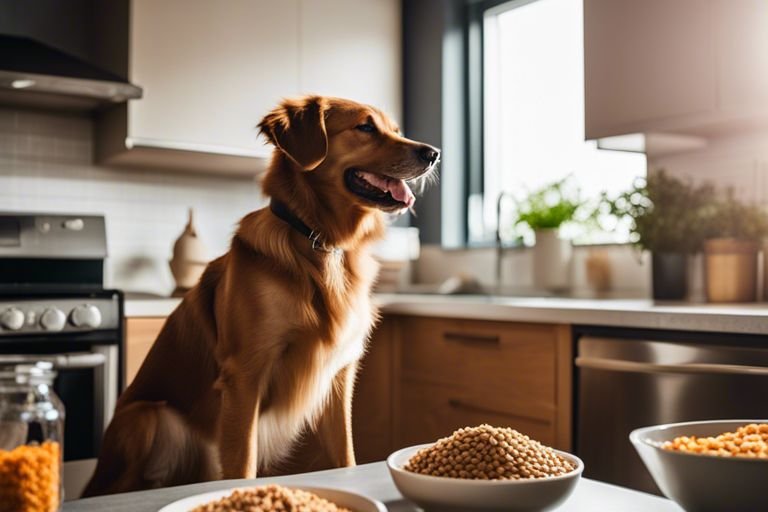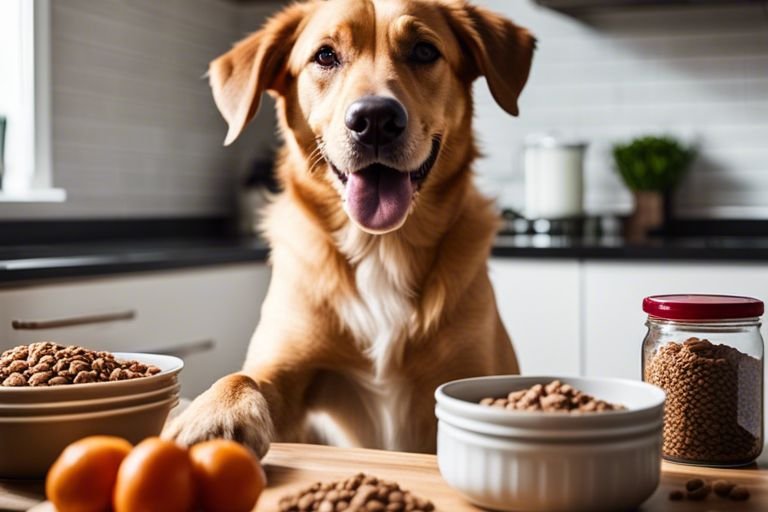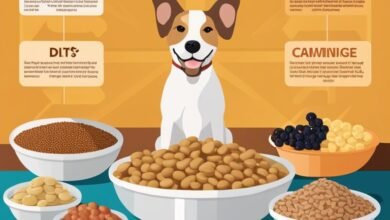How To Make Homemade Budget Friendly Dog Food – A Step-by-Step Guide

There’s a rewarding way to ensure your furry friend gets nutritious meals without breaking the bank – by making homemade budget friendly dog food. Follow this step-by-step guide to whip up healthy and wallet-friendly meals for your beloved pet, tailored to their taste and dietary needs.
Key Takeaways:
- Variety of Ingredients: Using a variety of ingredients such as lean meats, vegetables, and whole grains can provide a well-rounded nutritional meal for your dog.
- Proper Portions: It is important to feed your dog the right portions based on their size, age, and activity level to maintain a healthy weight.
- Avoid Certain Foods: Some foods like chocolate, grapes, and onions can be toxic to dogs, so it’s important to research and avoid any harmful ingredients.
- Supplements: Consider adding supplements like calcium, fish oil, or vitamins to ensure your dog is getting all the necessary nutrients in their budget friendly dog food.
- Consult with a Vet: Before making any changes to your dog’s diet, consult with a veterinarian to ensure that the homemade food meets their individual nutritional needs.

Understanding Your Dog's Nutritional Needs
Factors to Consider When Choosing Ingredients
Your dog’s nutritional needs are vital to their health and well-being. Factors to consider when choosing ingredients for homemade dog food include your dog’s age, breed, size, activity level, and any existing health conditions. It is crucial to tailor the ingredients to meet your dog’s specific requirements to ensure they are getting all the necessary nutrients.
- Age
- Breed
- Size
- Activity level
- Existing health conditions
Any changes in your dog’s diet should be made gradually to prevent digestive upset. Consult with your veterinarian if you are unsure about which ingredients are suitable for your furry friend.
How to Determine Your Dog's Dietary Requirements
Now, to determine your dog’s dietary requirements, you need to consider factors such as their age, weight, activity level, and any health issues they may have. Your veterinarian can provide guidance on the recommended daily caloric intake and the percentage of protein, fats, and carbohydrates your dog needs based on these factors.
When creating a homemade diet for your dog, it is vital to ensure they are getting a balanced mix of nutrients. You can use online resources or consult with a veterinary nutritionist to formulate a diet that meets your dog’s specific needs.

Selecting the Right Ingredients
Tips for Choosing Affordable and Nutritious Ingredients
Some key tips for selecting affordable and nutritious ingredients for your budget friendly dog food include:
- Opt for whole grains like brown rice or oats instead of expensive processed grains
- Choose affordable protein sources such as chicken, turkey, and lean cuts of beef
- Incorporate fruits and vegetables that are in season to keep costs down
Perceiving the nutritional value of each ingredient can help you create a balanced and budget-friendly meal plan for your dog.
How to Avoid Common Allergens and Fillers
Even with a budget-friendly approach, it’s important to avoid common allergens and fillers in your dog’s food. By being conscious of these ingredients, you can improve your dog’s health and well-being. Start by:
Affordable substitutes like sweet potatoes instead of corn, and opting for single-source proteins like salmon or lamb can reduce the chances of triggering allergies in your pet.
Preparing Budget Friendly Dog Food
Step-by-Step Guide to Cooking and Mixing Ingredients
Clearly, preparing homemade budget friendly dog food requires careful consideration of ingredients and their nutritional value. Here is a step-by-step guide to cooking and mixing ingredients:
| Cooking | Mixing |
| Cook proteins thoroughly | Combine proteins with cooked grains or vegetables |
| Steam or boil vegetables until tender | Add supplements like fish oil or calcium |
| Avoid seasonings like salt and garlic | Ensure an even distribution of ingredients |
How to Ensure Proper Nutrition and Balance
You want to provide your dog with a balanced diet to meet their nutritional needs. This involves incorporating a variety of proteins, carbohydrates, and vegetables into their meals. Additionally, consider consulting with a veterinarian or pet nutritionist to ensure your budget friendly dog food recipe is meeting your pet’s requirements.
Another important aspect of ensuring proper nutrition and balance in homemade dog food is to avoid ingredients that can be harmful to dogs. Foods such as chocolate, grapes, onions, and foods high in sugar should never be included in budget friendly dog food recipes. Always prioritize your dog’s health and well-being when preparing their meals.

Tips for Feeding and Storing Homemade Dog Food
All dog owners want to provide the best care for their furry friends, including their diet. Pertaining to homemade dog food, here are some key tips to ensure your pet gets the nutrition they need:
- Consult with your vet to create a well-balanced diet for your dog.
- Use fresh and high-quality ingredients to prepare the food.
- Introduce new ingredients gradually to monitor for any allergies or sensitivities.
- Rotate protein sources to provide a variety of nutrients.
Perceiving the importance of proper feeding and storing practices is vital for your dog’s health and well-being. For more detailed guidance on preparing homemade dog food, check out DIY Homemade Dog Food.
How to Transition Your Dog to Homemade Food
On launching on a transition to homemade food for your dog, start by mixing in small amounts of the new food with their current diet. Gradually increase the proportion of homemade food while decreasing the store-bought food over the course of a week or two until your dog is fully transitioned.
Factors to Consider When Storing and Handling Homemade Food
Your dog’s health depends on how well you store and handle their homemade meals. To ensure food safety and freshness:
- Store homemade dog food in airtight containers in the refrigerator.
- Divide the food into meal-sized portions for convenience.
- Label containers with the date of preparation to track freshness.
Assume that any leftovers should be discarded after a few days to prevent spoilage and contamination.
With proper feeding and storage practices in place, you can provide your furry friend with nutritious and delicious homemade meals that contribute to their overall well-being.

To wrap up
Ultimately, preparing homemade budget-friendly dog food can be a rewarding experience for both you and your furry companion. By following these simple steps and guidelines, you can ensure that your dog is getting nutritious and delicious meals without breaking the bank. Remember to consult with your veterinarian to ensure that your dog’s diet is balanced and meets their specific dietary needs. With a little time and effort, your dog will thank you for the homemade meals that are made with love and care.
FAQ
Q: Why should I consider making homemade dog food?
A: Making homemade dog food ensures that you know exactly what ingredients go into your dog’s food, allowing you to tailor it to their specific dietary needs and preferences. It can also be a cost-effective way to provide your dog with quality nutrition.
Q: Is it safe to feed my dog homemade food?
A: As long as you ensure that your dog’s homemade food is balanced and contains all the necessary nutrients, it can be safe to feed your dog homemade food. It’s important to consult with a veterinarian or canine nutritionist to make sure your dog’s dietary needs are being met.
Q: What ingredients are important for homemade dog food?
A: Essential ingredients for homemade dog food include a source of protein (such as meat, poultry, or fish), carbohydrates (such as rice or sweet potatoes), healthy fats (such as olive oil or flaxseed), and a variety of fruits and vegetables for vitamins and minerals.
Q: How can I make sure my dog's homemade food is balanced?
A: To ensure that your dog’s homemade food is balanced, you can consult with a veterinarian or canine nutritionist to create a recipe that meets your dog’s specific needs. You can also rotate ingredients and vary the recipes to provide a wider range of nutrients.
Q: Are there any foods that are not safe for dogs to eat?
A: Yes, there are several foods that are toxic to dogs and should be avoided, including chocolate, grapes, raisins, onions, garlic, and products containing xylitol. It’s important to research and double-check the safety of any ingredient before including it in your dog’s homemade food.




